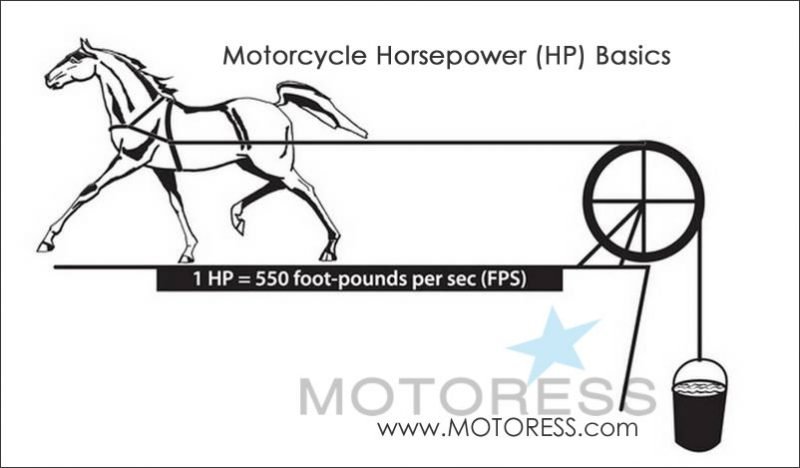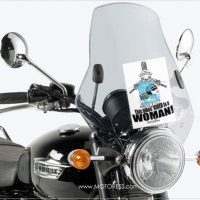Last Update: 24 January 2024

Are you often confused when conversations come up about motorcycle horsepower? Or when you hear someone say, “Yeah, it’s fast! It’s got 160 brake horsepower!” Or you might hear a rider make this comment, “It’s got 140 horsepower on the back wheel!” And as odd as it seems, “brake” horsepower has nothing to do with braking!
Do you find yourself perplexed during discussions about motorcycle horsepower? Perhaps you’re at a loss when someone enthusiastically declares, “Yep, it’s quick! Packs a punch with 160 brake horsepower!” Alternatively, you might overhear a rider boast, “It churns out 140 horsepower at the rear wheel!” Interestingly enough, the term “brake” horsepower doesn’t actually relate to braking – talk about a curious twist! Now, let’s unravel the mysteries of motorcycle horsepower basics.
Frequently, individuals delving into the realm of “HP” talk — HP being the shorthand for horsepower — often find themselves entangled in confusion. Is it a reference to the engine’s capacity or the effective power reaching the wheel? It’s a valid puzzle, especially when factoring in the gearbox, final drive, and various auxiliary components, all contributing to a loss of horsepower in the intricate process. The horsepower experienced at the motorcycle’s driving wheel is inevitably diminished compared to the raw engine output and other factors in the equation.
Horsepower was invented and discovered by James Watt, the same person who is remembered through the definition of Watt as a unit of power, exemplified by the light bulb. The Scottish engineer developed this metric measure with the initial goal of demonstrating and validating the power of the steam engine he had invented.
The Various Measurements of Horsepower (HP)
- bhp: Brake horsepower, net, bottom line crankshaft horsepower -the power delivered directly to and measured at the engine’s crankshaft, its minus (net) frictional losses in the transmission — gears, bearings, oil drag, wind, and so forth.
- ehp or thp: Effective horsepower is the power converted to useful work. In the case of a motorcycle, it’s the power that’s been turned into forward motion on a chassis dynamo-meter. In its cleanest form, it’s also called “True HP” – wheel power.
- nhp: nominal horsepower from the size of the engine and the piston speed and is only accurate at a pressure of 7 psi.
- ihp: Indicated horsepower or gross horsepower (academic capability of the engine) minus frictional losses within the engine (bearings drag, rod and crankshaft windage losses, oil film drag, etc.
- SAE: an American standard rating measured using a blueprinted test engine running on a stand without accessories, mufflers, or emissions control devices.
As motorcycle riders, we are most interested in the first two points mentioned above: bhp and ehp “effective horsepower” in simple terms specified as wheel horsepower.
To gauge motorcycle horsepower accurately, you must connect your motorcycle engine to a dynamometer. This device imposes a load on the engine and gauges the power it can generate against that load. This service is readily available at tracks and dealerships.
In addition, just so you know thp is generally about 10-20% lower than the engine’s power “bhp” ratings because of the loss experienced through the drive train, and especially the tires.
Horsepower, often seen as a status symbol in the realm of motorcycle performance and coolness, is a common misconception. The belief is that more horsepower equates to being a superior rider, but this is far from the truth. Many riders possess powerful machines with horsepower levels that surpass their skill set. In reality, the key factors are the weight-to-power ratio and, more importantly, torque. Owning a lightweight motorcycle with substantial horsepower may be thrilling, but it’s crucial to have the skills and proficiency to harness that power safely. In fact, if your riding skills don’t match up to the horsepower, it can pose a considerable danger. It’s not just about the “horses” in the engine; it’s about having the expertise to handle them.
Now that you’re armed with the facts, you won’t feel out of the loop when engaged in one of the most common discussions about motorcycles and horsepower.

Delving Deeper Into Motorcycle Horsepower
Bhp defined: Horsepower is a measure of work (energy) done over time and yes it was calculated using the work of a horse.
1hp/one horsepower is 33,000 lb.-ft/minute.

Consider this widely-used analogy: if you were to lift 33,000 pounds one foot over the course of one minute, you would essentially be working at the rate of one horsepower, expending one horsepower-minute of energy in the process.
1 (mechanical) horsepower unit is equal to 746 watts
If you were to place this 1-horsepower horse on a treadmill, it would have the capability to run a generator, consistently producing 746 watts of power.
In conclusion, the equivalence of one mechanical horsepower to 745.699 watts or 0.746 kW (kilowatts) of electrical horsepower sheds light on the intricate world of power measurements. Next time you engage in discussions about horsepower, consider the fascinating 0.0268 horsepower behind the light bulb in your lamp, transcending the ordinary 20-watt measure. It’s a reminder that even in the realm of electrical power, there’s more to explore and appreciate than meets the eye!
Keep the conversation illuminating!




